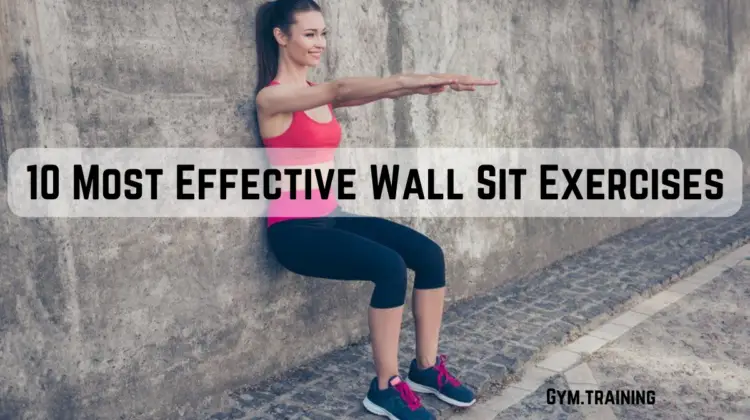
Wall sits, or wall squat exercises, are excellent for building lower body strength and endurance. While the traditional wall sit is a highly effective exercise on its own.
Wall sit exercises, variations and modifications can add diversity to your workout routine and target different muscle groups. Before that let us know why they are important and the best and effective wall sit exercises for building strength and stability.
Why Choose Wall Sits?
- Leg Strengthening: Wall sit exercises primarily target the quadriceps, hamstrings, and glutes, similar as isometric exercises do making them an excellent exercise for building lower body strength.
- No Equipment Required: Unlike many other leg exercises, wall sits require no equipment. All you need is a wall and your body weight.
- Time-Efficient: Wall sit exercises are a quick and efficient way to work your legs. A few minutes a day can yield noticeable results over time.
- Functional Strength: The isometric nature of wall sits mimics the static demands of daily life, helping to improve your functional strength and endurance.
Benefits of the Wall Sit Exercises
- Builds Leg Strength: Wall sit exercises primarily target your quadriceps, hamstrings, and glutes. Consistently incorporating them into your routine will help you build strength, develop stronger leg muscles, making daily activities easier and enhancing your athletic performance.
- Improves Endurance: Wall sits challenge your muscles to sustain a static position, which can significantly improve your muscular endurance. This endurance can benefit you in various sports and activities.
- Low Impact: Unlike high-impact exercises, wall sits are gentle on your joints, making them suitable for individuals of all fitness levels and ages. This makes them an excellent choice for rehabilitation or cross-training.
- Enhances Core Stability: To maintain the wall sit position, you engage your core muscles, helping to improve your overall stability and posture. Keeping your core engaged helps your body build strength and makes your muscles tough.
Variations Of Wall Sit Exercises
To prevent boredom and challenge your leg muscles in different ways, consider these wall sit exercises variations:
- One-Leg Wall Sit: Lift one leg off the ground while holding the wall sit position to target each leg individually.
- Ball Squeeze: Place a stability ball between your knees and squeeze it while you wall sit to engage your inner thigh muscles.
- Weighted Wall Sit: Hold a dumbbell or kettlebell close to your chest while performing wall sits to increase resistance and build more strength.
- Elevated Wall Sit: Elevate your heels on a step or a sturdy platform to intensify the exercise and engage your calves.
10 Best Wall Sit Exercises
1. Basic Wall Sit
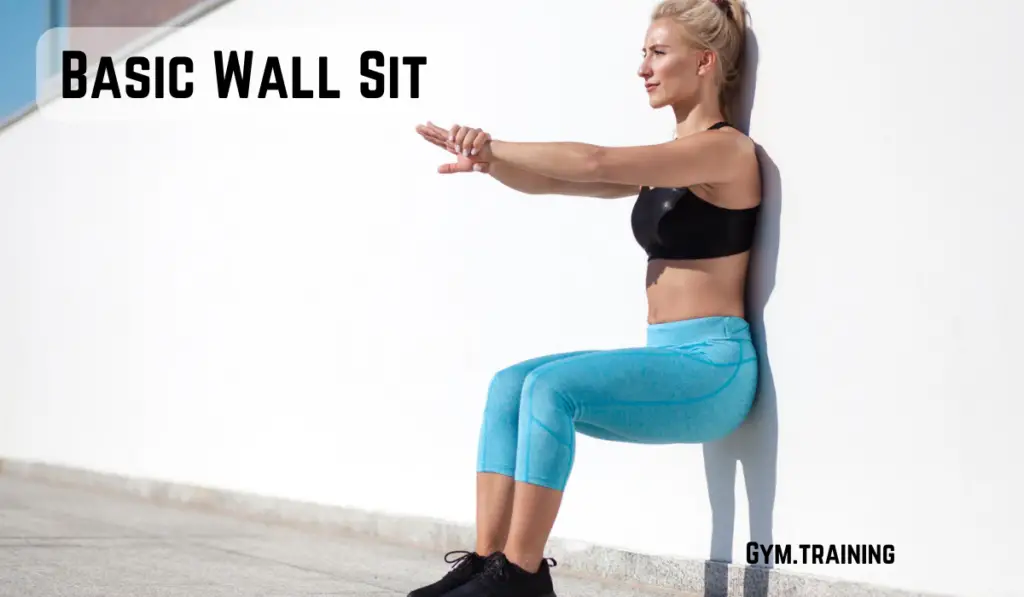
Start with the classic wall sit to build a solid foundation. Here’s how to do it:
- Place your back to a wall and your feet shoulder width apart.
- Slide down flat against the wall, bending your knees until they are at a 90 degrees angle and keeping your thighs are parallel.
- Hold this position for as long as you can maintain good form.
2. Single Leg Wall Sit
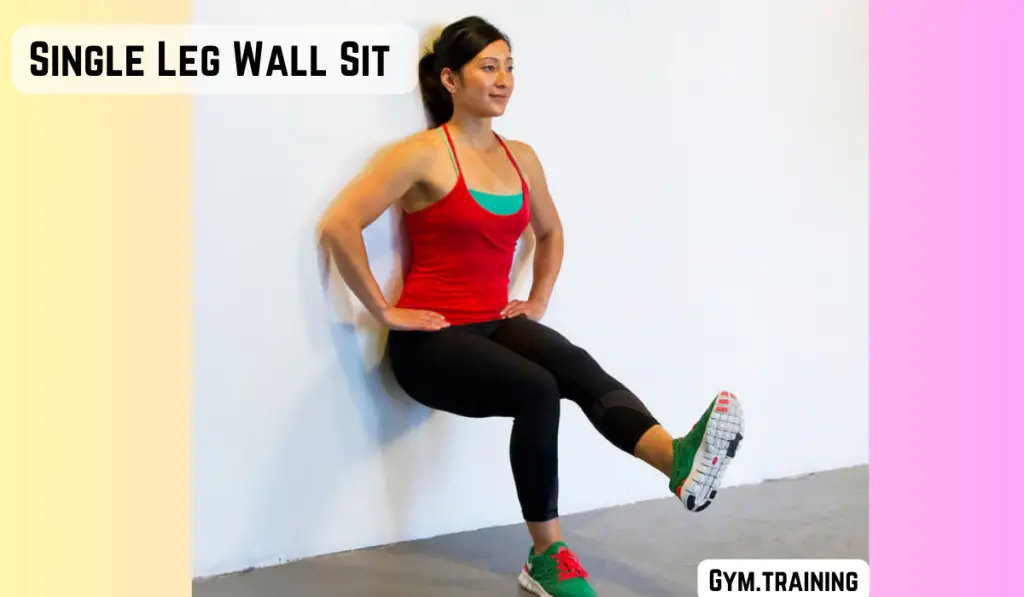
This variation adds intensity and targets one leg at a time. It’s excellent for improving balance and stability.
- Follow the same steps as the basic wall sit with 90-degree angle but lift one foot off the ground and extend it forward.
- Hold the position for the desired duration and then switch legs.
3. Wall Sit with Calf Raises

This exercise combines the benefits of wall sits with calf strengthening.
- Perform a standard wall sit.
- While in the seated position, lift your heels off the ground and perform calf raises.
4. Ball Squeeze Wall Sit
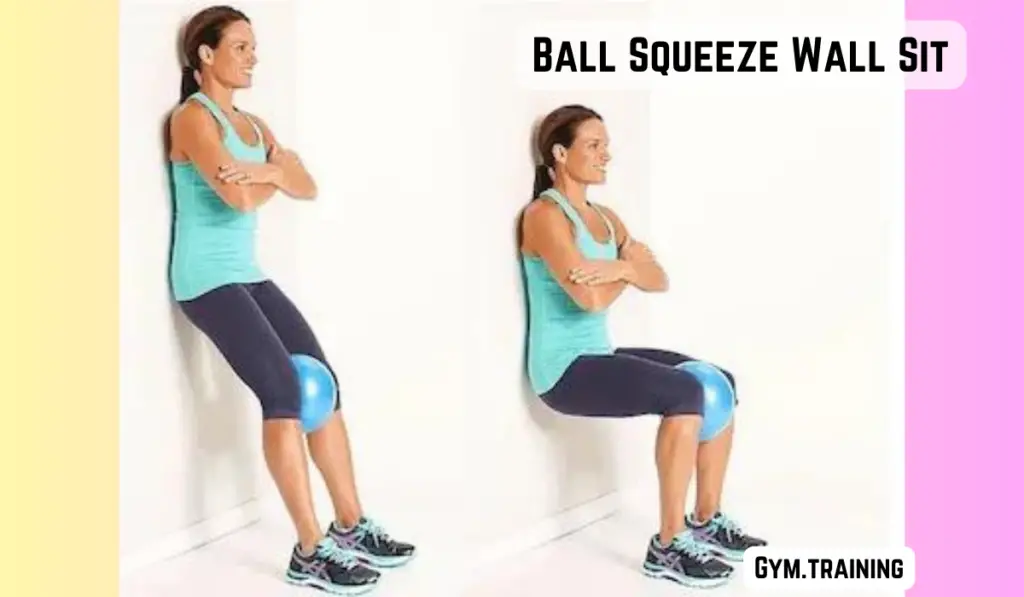
This variation adds an element of isometric upper body work.
- Hold a small exercise ball or a rolled-up towel between your knees while performing a wall sit.
- Squeeze the ball/towel to engage your inner thigh muscles.
5. Wall Sit with Leg Lifts
Incorporate leg lifts to target the hip flexors and add variety to your routine.
- Perform a basic wall sit.
- While holding the wall sit position, lift one leg off the ground, keeping it straight.
- Return to the starting position and repeat with the other leg.
6. Weighted Wall Sit
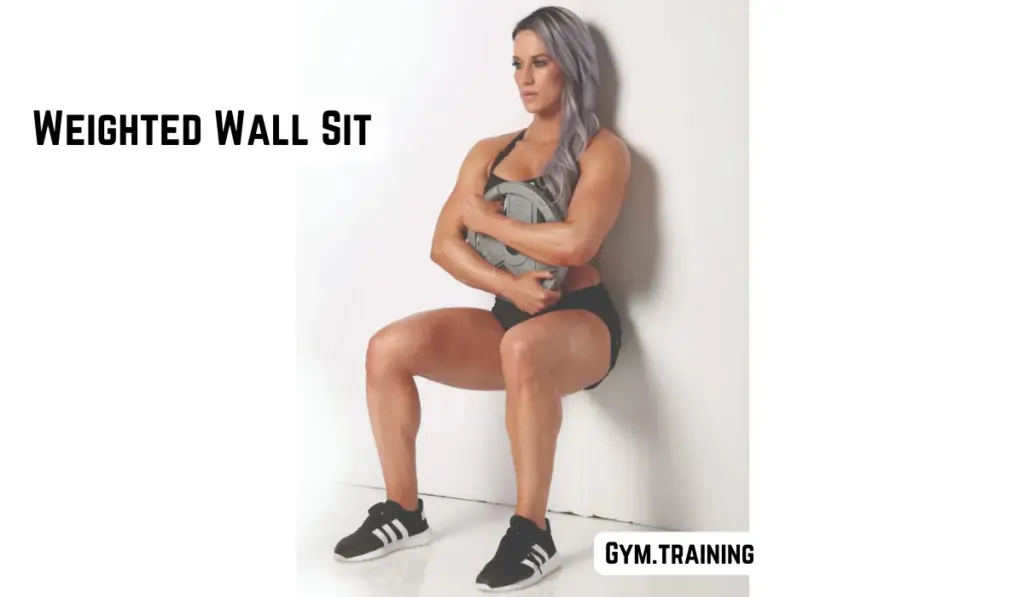
Adding weight to your wall sit can increase the intensity and build more muscle.
- Hold a dumbbell, kettlebell, or other weighted object close to your chest while performing a wall sit.
7. Pulse Wall Sit
This variation increases the time under tension and can be quite challenging.
- Hold the wall sit position.
- Move up and down about 2-4 inches repeatedly, maintaining the seated position.
8. Wall Sit with Overhead Press
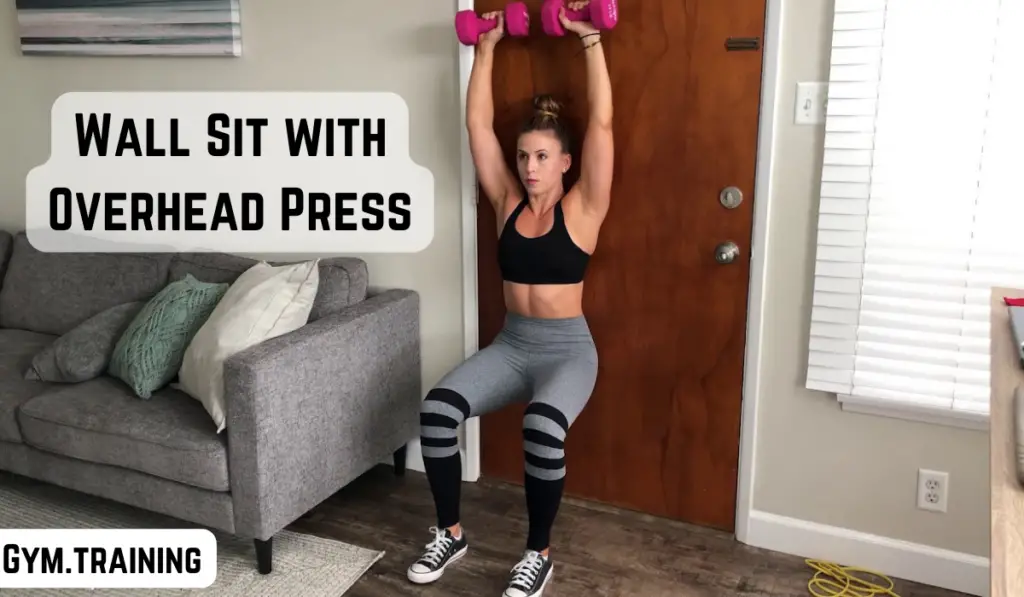
Incorporate an upper body exercise to engage your shoulders and arms.
- Hold a dumbbell or a resistance band with handles in each hand.
- While performing a wall sit, press the weight or band overhead.
9. Ballet Wall Sit
This variation adds a graceful and balance-enhancing element to your wall sit.
- Perform a basic wall sit.
- Lift your heels off the ground and raise them onto your toes, mimicking a ballet “releve.”
10. Squat to Wall Sit Combo
Combine wall sits with bodyweight squats for a complete lower body workout.
- Start with a bodyweight squat.
- Immediately transition into a wall sit position.
- Hold the wall sit, then return to the standing position and repeat.
You May Also Want To Read: 15 Most Effective Pilates Exercises
When incorporating these wall sit exercises variations into your workout routine, remember to prioritize proper form, gradually increase the intensity, and listen to your body.
Wall sit exercises can be challenging, so it’s essential to start at a level that matches your fitness level and gradually increase the amount of time to more advanced variations as you become stronger and more comfortable.
Ways To Add Wall Sit Exercises In Your Fitness Routine
Now that you understand the benefits, form, and wall sit exercises variations, let’s discuss how to effectively incorporate them into your fitness routine:
- Frequency: Start by adding wall sit exercises into your routine 2-3 times a week. You can gradually increase the frequency as your leg strength improves.
- Duration: Aim for multiple sets of wall sits, with each set lasting between 30 seconds to 2 minutes, depending on your fitness level. Rest for a few minutes between sets to recover.
- Combination Workouts: Combine wall sits with other lower body exercises like squats, lunges, or leg presses to create a comprehensive leg workout.
- Full-Body Workouts: Integrate wall sits into full body workouts to maximize calorie burn and overall strength gains.
- Progress Tracking: Keep a workout journal or use a fitness app to track your progress. Note the duration of your wall sits, the number of sets, and any other simple exercise or variations you’ve tried. Tracking your progress can be highly motivating.
- Stretch and Recover: After each wall sit session, incorporate stretching exercises to improve flexibility and prevent muscle soreness. Stretch your quadriceps, hamstrings, and calves first.
- Consult a Trainer: If you’re new to exercise or have any underlying health concerns, consider consulting a fitness trainer or physical therapist for guidance and a personalized workout plan.
So, take the first step towards stronger legs today. Find a wall, follow the proper form, explore variations, and make wall sits a regular part of your workout routine.
With dedication and consistency, you’ll soon be reaping the rewards of this effective exercise, and those sculpted, powerful legs you’ve always dreamed of will become a reality.
Remember, it’s not just about the exercise; it’s about the commitment and effort you put into it that will lead you to success. Happy wall sitting!
